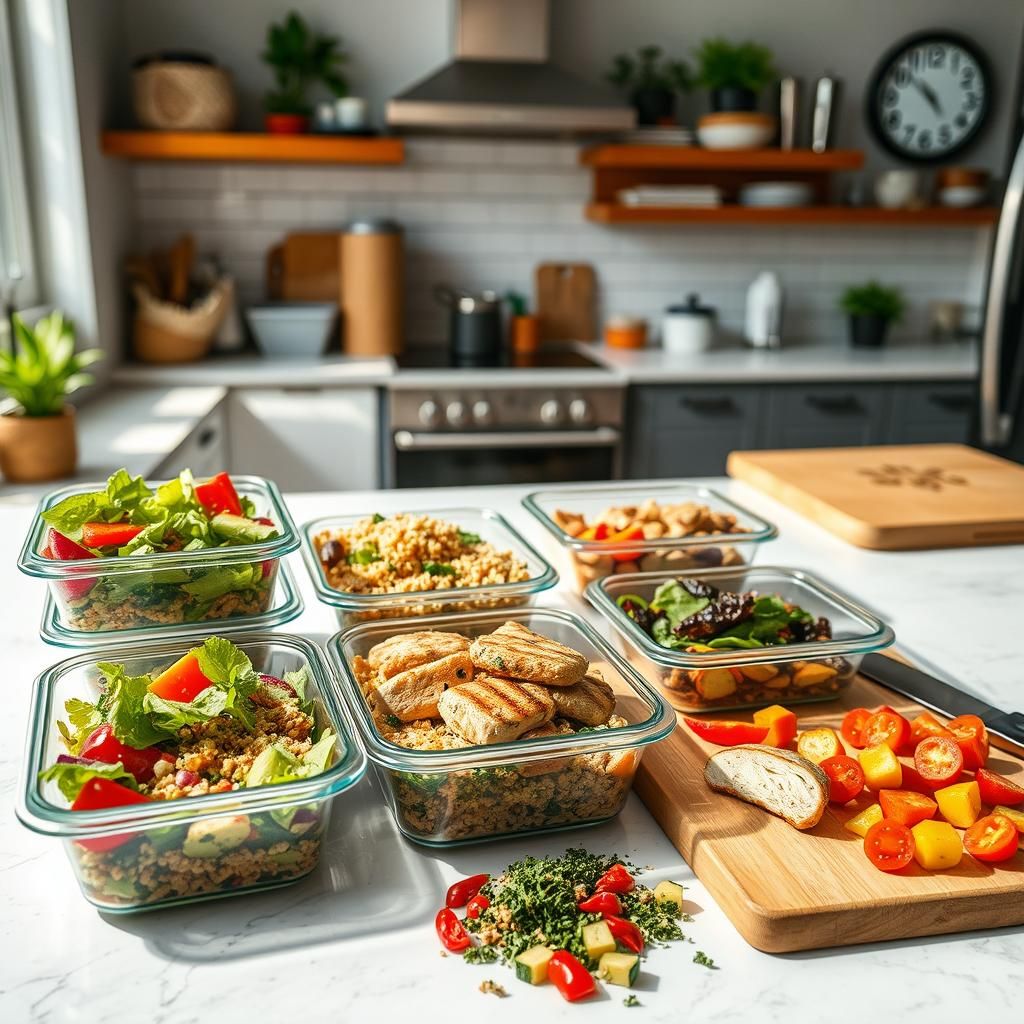Lose Weight At Home: Your Ultimate Guide

Losing weight at home is achievable with the right plan. This comprehensive guide provides a structured approach, blending dietary adjustments, exercise routines, and lifestyle changes for sustainable results. We’ll delve into each aspect, offering actionable tips and expert advice to empower you on your weight loss journey.
Why Choose Home Weight Loss?
Embarking on a weight loss journey from the comfort of your home offers several advantages:
- Convenience: No gym memberships or travel time required. Exercise when it fits your schedule.
- Cost-Effective: Save money on gym fees and specialized equipment (initially).
- Privacy: Exercise without feeling self-conscious or judged.
- Flexibility: Tailor your program to your specific needs and preferences.
- Comfort: Work out in a familiar environment where you feel most relaxed.

The Core Components of a Home Weight Loss Plan
A successful at-home weight loss plan revolves around three key pillars: diet, exercise, and lifestyle adjustments. Neglecting any of these components can hinder your progress.
1. Dietary Adjustments: Fueling Your Body for Weight Loss
Diet plays a crucial role in weight management. Focus on creating a calorie deficit, where you consume fewer calories than you burn. Here’s how to optimize your diet for weight loss at home:
- Calculate Your Caloric Needs: Use an online calculator or consult a registered dietitian to determine your daily calorie requirements based on your age, sex, activity level, and weight loss goals.
- Prioritize Whole Foods: Build your meals around whole, unprocessed foods like fruits, vegetables, lean protein, and whole grains. These foods are nutrient-dense and promote satiety.
- Increase Protein Intake: Protein is essential for building and repairing muscle tissue, which boosts metabolism. Good sources include chicken breast, fish, beans, lentils, tofu, and Greek yogurt. Studies show that increased protein intake can lead to reduced appetite and increased fat burning.
- Load Up on Fiber: Fiber-rich foods like fruits, vegetables, and whole grains promote fullness and regulate blood sugar levels. Aim for at least 25-30 grams of fiber per day. Research suggests a high-fiber diet contributes to weight loss and maintenance.
- Healthy Fats are Your Friends: Incorporate healthy fats like avocados, nuts, seeds, and olive oil into your diet. These fats are beneficial for hormone production and overall health.
- Hydrate, Hydrate, Hydrate: Drink plenty of water throughout the day. Water helps you feel full, boosts metabolism, and aids digestion. Aim for at least 8 glasses per day.
- Limit Processed Foods, Sugary Drinks, and Alcohol: These items are high in calories and low in nutrients, hindering your weight loss efforts.
- Mindful Eating: Pay attention to your hunger cues and eat slowly, savoring each bite. This helps you recognize when you’re full and prevent overeating.
- Meal Planning and Preparation: Planning your meals in advance and prepping ingredients can prevent impulsive unhealthy choices.




Sample Meal Plan:
This is just a sample. Adjust portion sizes and food choices to fit your individual needs and preferences.
- Breakfast: Oatmeal with berries and nuts, or Greek yogurt with fruit and a sprinkle of chia seeds.
- Lunch: Salad with grilled chicken or fish, or a lentil soup with whole-grain bread.
- Dinner: Baked salmon with roasted vegetables, or a stir-fry with tofu and brown rice.
- Snacks: Fruits, vegetables with hummus, or a handful of nuts.
2. Exercise Routines: Burning Calories and Building Muscle
Regular exercise is vital for weight loss and overall health. Home workouts can be just as effective as gym workouts, especially if you’re consistent.
- Cardiovascular Exercise: Cardio burns calories and improves cardiovascular health. Aim for at least 150 minutes of moderate-intensity or 75 minutes of vigorous-intensity cardio per week.
 Examples of at-home cardio include:
Examples of at-home cardio include:
- Running or jogging in place
- Jumping jacks
- Burpees
- Dancing
- Stair climbing
- Online Fitness Classes
- Strength Training: Strength training builds muscle, which boosts metabolism and helps you burn more calories at rest. Aim for at least two strength training sessions per week, working all major muscle groups.
 Examples of at-home strength training exercises include:
Examples of at-home strength training exercises include:
- Bodyweight Exercises
- Resistance Bands
- Dumbbells
- Household Items
- High-Intensity Interval Training (HIIT): HIIT involves short bursts of intense exercise followed by brief recovery periods. It’s an efficient way to burn calories and improve cardiovascular health. Examples of HIIT workouts include:
- Sprinting
- Jumping Jacks and Squats
- Online HIIT Workouts
- Yoga and Pilates: Yoga and Pilates improve flexibility, strength, and balance. They can also help reduce stress, which can contribute to weight gain.
- Create a Workout Schedule: Schedule your workouts in advance and treat them like important appointments.
- Find an Accountability Partner: Working out with a friend or family member can help you stay motivated.
- Listen to Your Body: Rest when you need to and don’t push yourself too hard, especially when starting a new workout routine.
Sample Weekly Workout Schedule:
- Monday: Strength Training (bodyweight exercises or resistance bands)
- Tuesday: Cardio (running in place, jumping jacks, or dancing)
- Wednesday: Rest or Active Recovery (yoga or stretching)
- Thursday: HIIT (sprinting or jumping jacks and squats)
- Friday: Strength Training (bodyweight exercises or dumbbells)
- Saturday: Cardio (long walk or hike)
- Sunday: Rest
3. Lifestyle Adjustments: Sustainable Habits for Long-Term Success
Making sustainable lifestyle adjustments is crucial for maintaining weight loss long-term. These changes focus on creating healthy habits that become part of your daily routine.
- Prioritize Sleep: Aim for 7-8 hours of sleep per night. Lack of sleep can disrupt hormones that regulate hunger and satiety, leading to increased cravings and weight gain.
- Manage Stress: Chronic stress can lead to increased cortisol levels, which can promote fat storage, especially in the abdominal area. Find healthy ways to manage stress, such as:
- Meditation
- Yoga
- Spending Time in Nature
- Hobbies

- Limit Screen Time: Excessive screen time can lead to a sedentary lifestyle and poor eating habits. Set limits on your screen time and take breaks to move around.
- Stay Active Throughout the Day: Find ways to incorporate more activity into your daily routine, such as:

- Taking the stairs instead of the elevator.
- Walking or biking to work or errands.
- Standing up and moving around every 30 minutes.
- Gardening or doing yard work.
- Track Your Progress: Keep track of your weight, measurements, and food intake.
 This can help you stay motivated and identify areas where you need to make adjustments.
This can help you stay motivated and identify areas where you need to make adjustments. - Set Realistic Goals: Set small, achievable goals that you can realistically accomplish. This will help you stay motivated and avoid feeling overwhelmed.
- Celebrate Your Successes: Acknowledge and celebrate your achievements, no matter how small. This will help you stay positive and motivated.
- Seek Support: Connect with friends, family, or a support group to help you stay on track. Sharing your struggles and successes with others can make the journey easier.
- Be Patient: Weight loss takes time and effort. Don’t get discouraged if you don’t see results immediately. Stay consistent with your plan and you will eventually reach your goals.
Common Pitfalls to Avoid
Even with a well-structured plan, certain pitfalls can derail your weight loss efforts. Here’s what to watch out for:
- Crash Dieting
- Overeating on Weekends
- Emotional Eating
- Lack of Planning
- Comparing Yourself to Others
- Giving Up Too Easily
- Neglecting Strength Training
- Ignoring Portion Control
- Not Reading Food Labels
- Dehydration
Advanced Strategies for Enhanced Results
Once you’ve established a solid foundation, consider incorporating these advanced strategies to further optimize your weight loss:
- Intermittent Fasting
- Carb Cycling
- Progressive Overload in Strength Training
- Tracking Macronutrients
- Working with a Registered Dietitian or Personal Trainer
Building a Support System
Weight loss is often easier with support. Consider these options:
- Family and Friends
- Online Communities
- Support Groups
- Professional Help
Maintaining Your Weight Loss
Losing weight is only half the battle. Maintaining your weight loss long-term is crucial. Here are some tips for maintaining your weight loss:
- Continue to follow a healthy diet and exercise regularly.
- Monitor your weight regularly and make adjustments to your diet or exercise plan as needed.
- Stay mindful of your eating habits and avoid emotional eating.
- Continue to prioritize sleep and manage stress.
- Seek support from friends, family, or a support group.
- Remember why you started and stay committed to your goals.
Check Out This
Affiliate Link Disclosure: Some of the links in this post are affiliate links. This means that if you click on the link and make a purchase, I may receive a small commission at no extra cost to you. I only recommend products or services that I personally use and believe will be valuable to my readers.






